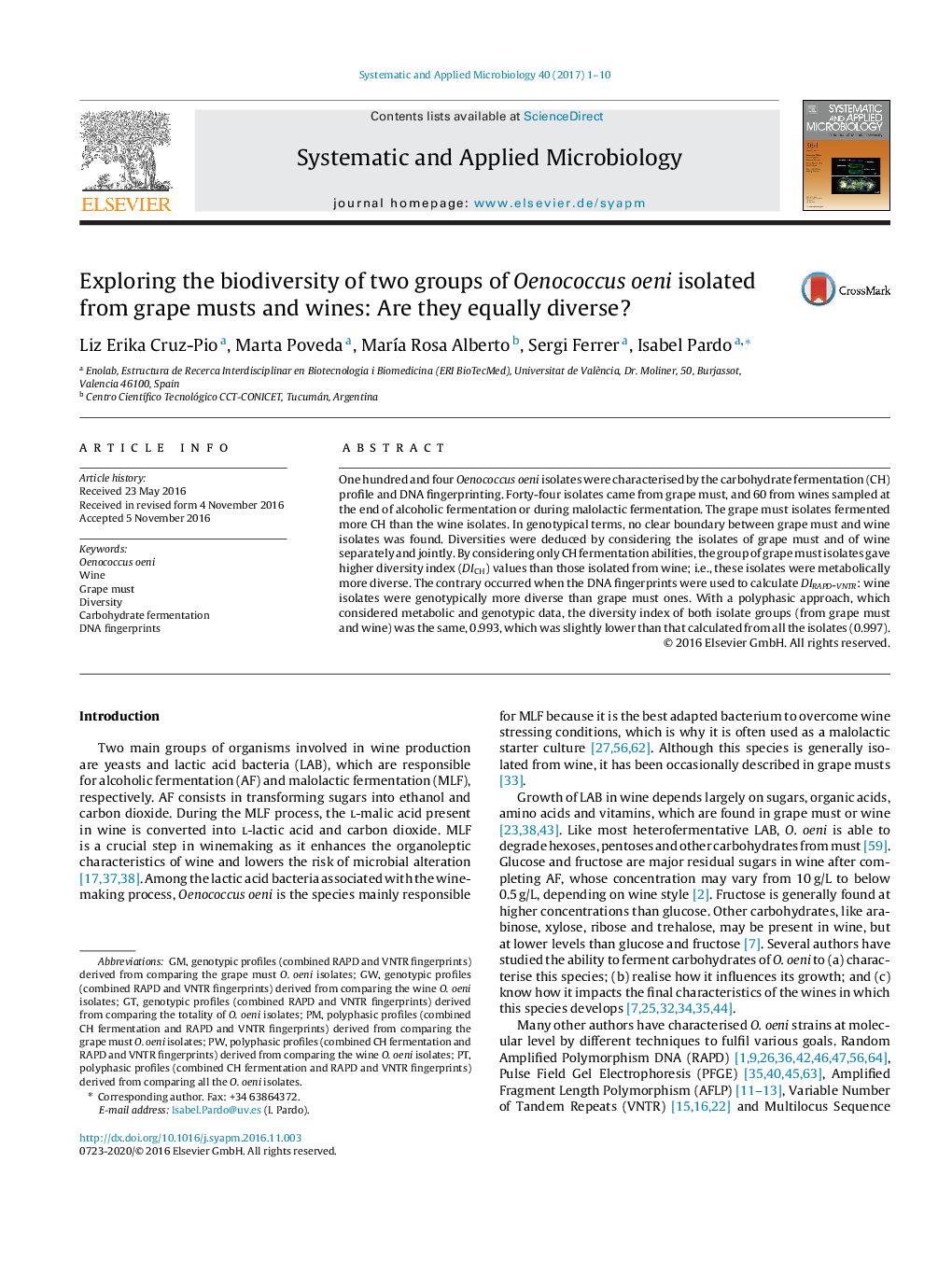| Article ID | Journal | Published Year | Pages | File Type |
|---|---|---|---|---|
| 5519149 | Systematic and Applied Microbiology | 2017 | 10 Pages |
One hundred and four Oenococcus oeni isolates were characterised by the carbohydrate fermentation (CH) profile and DNA fingerprinting. Forty-four isolates came from grape must, and 60 from wines sampled at the end of alcoholic fermentation or during malolactic fermentation. The grape must isolates fermented more CH than the wine isolates. In genotypical terms, no clear boundary between grape must and wine isolates was found. Diversities were deduced by considering the isolates of grape must and of wine separately and jointly. By considering only CH fermentation abilities, the group of grape must isolates gave higher diversity index (DICH) values than those isolated from wine; i.e., these isolates were metabolically more diverse. The contrary occurred when the DNA fingerprints were used to calculate DIRAPD-VNTR: wine isolates were genotypically more diverse than grape must ones. With a polyphasic approach, which considered metabolic and genotypic data, the diversity index of both isolate groups (from grape must and wine) was the same, 0.993, which was slightly lower than that calculated from all the isolates (0.997).
